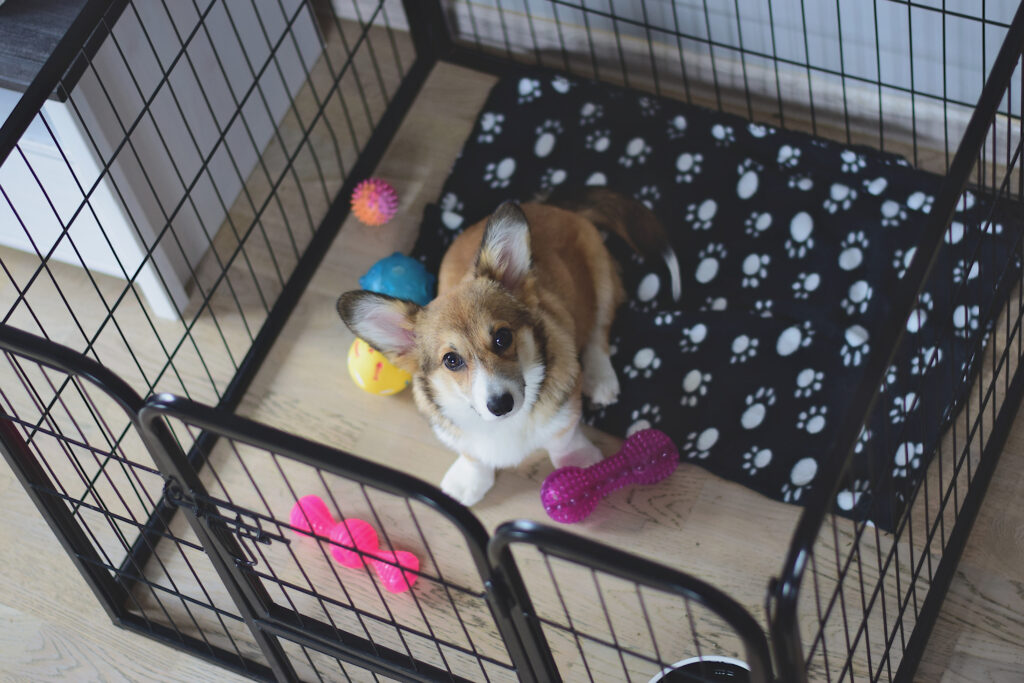When a puppy cries in a crate, it’s important to balance meeting their needs and teaching them to feel comfortable and secure in the crate.
Here’s a step-by-step guide to handle it effectively…
First, Assess the Situation
Crying is your puppy’s way of communicating. Ask yourself…
- Do they need a bathroom break? Young puppies can’t hold their bladder for long, especially at night.
- Are they hungry or thirsty? Ensure they’re fed and watered on a consistent schedule.
- Are they feeling lonely or scared? The crate is a new experience, so they may need reassurance.
- Are they uncomfortable? Make sure the crate is cozy, with soft bedding (if they don’t chew it) and no drafts.
How to Respond When They Cry
- Stay Calm and Consistent
If they cry, avoid reacting immediately with excitement or frustration. This can reinforce the idea that crying gets a reaction. - Check on Their Needs
- If it’s likely they need to go potty, take them out calmly and bring them right back to the crate.
- If they’re otherwise okay, offer a quiet and reassuring “shhh” or gentle word to let them know you’re there.
- Keep Interaction Brief
Minimize engagement during nighttime check-ins. Avoid turning on bright lights, playing, or lengthy cuddles—these can signal that crying = attention.
Prevent Crying Before It Starts
- Introduce the Crate Gradually
- Start by leaving the door open and letting your puppy explore. Toss treats or toys inside so they associate it with positive experiences.
- Practice short periods in the crate during the day before using it for extended periods at night.
- Tire Them Out
- Exercise and play before bedtime can help your puppy feel more ready to settle down.
- End the evening with a calm activity, like light petting, so they don’t go to bed overly stimulated.
- Make the Crate Cozy
- Use a comfortable blanket and possibly a crate cover to create a den-like environment.
- Try a warm, safe item like a heating pad under the bedding or a snuggle toy that mimics a heartbeat.
- Stick to a Routine
Predictability helps puppies feel safe. Feed, play, and take them out at the same times each day.
Avoid Common Mistakes
- Don’t Let Them Out for Attention
If you know they’ve been fed, exercised, and taken out, don’t let them out just because they’re crying for attention. This teaches them that crying = freedom. - Don’t Punish Crying
Scolding a puppy for crying can make the crate feel like a bad place and increase anxiety.
When to Seek Help
If your puppy consistently cries despite training and proper care, they might have crate anxiety or another issue. Consult a veterinarian or dog trainer for additional strategies.
With patience and consistency, your puppy will learn to see the crate as a safe, comfortable place, and the crying will eventually subside.


